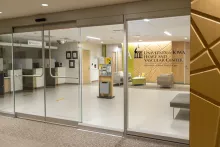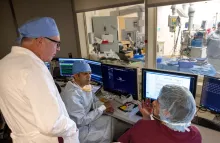Convergent Procedure
- For all other requests:
- 1-800-777-8442
Atrial fibrillation is a condition where your heart beats irregularly (arrhythmia), usually much faster than normal. This is caused by disruptions in the electrical signals that regulate your heart, making it harder for the upper and lower chambers of the heart to work together as they should.
While often managed with lifestyle changes, medications, and procedures, some people with atrial fibrillation do not respond to these standard treatment options, leaving them with limited options for long-term relief.
At University of Iowa Heart and Vascular Center, our cardiac specialists work to provide the latest treatments, including being the only care team in Iowa to offer the Convergent procedure, a new hybrid treatment option for patients with persistent atrial fibrillation.
The Convergent procedure combines minimally invasive heart surgery with cardiac ablation to effectively treat atrial fibrillation. This combination of techniques is one of the least invasive and most successful methods to surgically treat long standing, persistent atrial fibrillation and has been shown to have a higher level of success than heart surgery or ablation alone. It also has a shorter recovery time.
Performed in our state-of-the-art cardiac catheterization lab using the latest technologies, the Convergent procedure can relieve your symptoms and improve your quality of life.
How the Convergent procedure works
If you have atrial fibrillation and have not responded to standard treatments, the Convergent procedure could help relieve you of the abnormal electrical impulses causing your heart to beat irregularly.
The procedure is performed by a cardiothoracic surgeon and a cardiac electrophysiologist. After you are placed under general anesthesia, the surgeon will make a small incision in your abdomen and guide a scope (small camera) up to your heart. There, they will use extreme heat or cold to ablate (destroy) tissue, creating a pattern of scar tissue on the outside of layer of your heart to block irregular electrical signals.
One to two months after the first procedure, the electrophysiologist will then insert a thin tube known as a catheter through a vein near your groin, guiding it to your heart. From there, they will also use extreme heat or cold to ablate the heart tissue, creating scar tissue and filling in any gaps from inside the heart. They will also close the left atrial appendage to prevent blood clots that could cause strokes.
Once done, they may also complete a series of tests to confirm that the procedure has blocked the necessary electrical signals and the heartbeat is functioning normally.
What to expect after the Convergent procedure
Since the Convergent procedure is a minimally invasive procedure, you will only need to remain in the hospital under observation for a day or two. You may experience mild chest pain for a few days following the procedure, but you should be able to resume your normal activities within a week.
While most people do not report any complications from the Convergent procedure, please let your care team know if you experience any abnormal swelling, redness, or drainage around the incision site and/or develop a fever.
Who can benefit from the Convergent procedure?
The Convergent procedure is a good option for patients who have been clinically diagnosed with atrial fibrillation, structural heart disease, or some combination of the two and have not responded well to standard treatment options.
Talk to your provider if you’d like to learn more about the Convergent procedure and if you would be a viable candidate.
Our Care Team
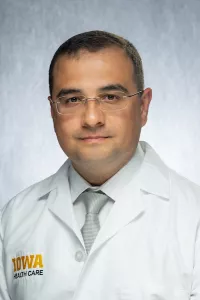

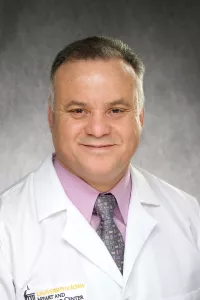
- Cardiothoracic Surgery
- Heart and Vascular

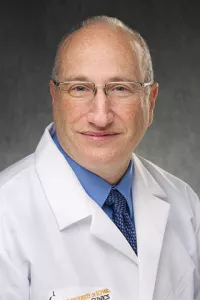


Not sure whether the Convergent procedure is right for you?
Locations and Offices
